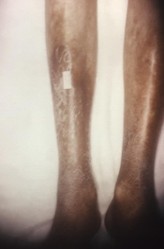Physicians have known for more than a century that nutritional status of any patient has an influence on the course of disease. In 1872, Clouston recommended the use of intragastric feeding with milk, eggs, jelly, alcohol, and sugar for patients. Over the decades, health practitioners developed preparations with intravenous infusion of hydrolyzed casein, lipids, glucose, nitrogen, and crystalline amino acids [2].
In severe illness, there is a dramatic increase in the body’s metabolic demands. When critically ill patients become malnourished, there is predisposition for infection, inability to heal wounds, decubitus ulcers, falls, and other complications. They may suffer from immune system compromise, and those who require ventilator management may become dependent on the machine [2].




 The Reality of Aspirinon 05/24/2021
The Reality of Aspirinon 05/24/2021
 An Old Microbeon 03/31/2021
An Old Microbeon 03/31/2021
 Coronavirus and Mental Illnesson 02/14/2021
Coronavirus and Mental Illnesson 02/14/2021
 Acute Ischemic Strokeon 12/25/2020
Acute Ischemic Strokeon 12/25/2020


Comments